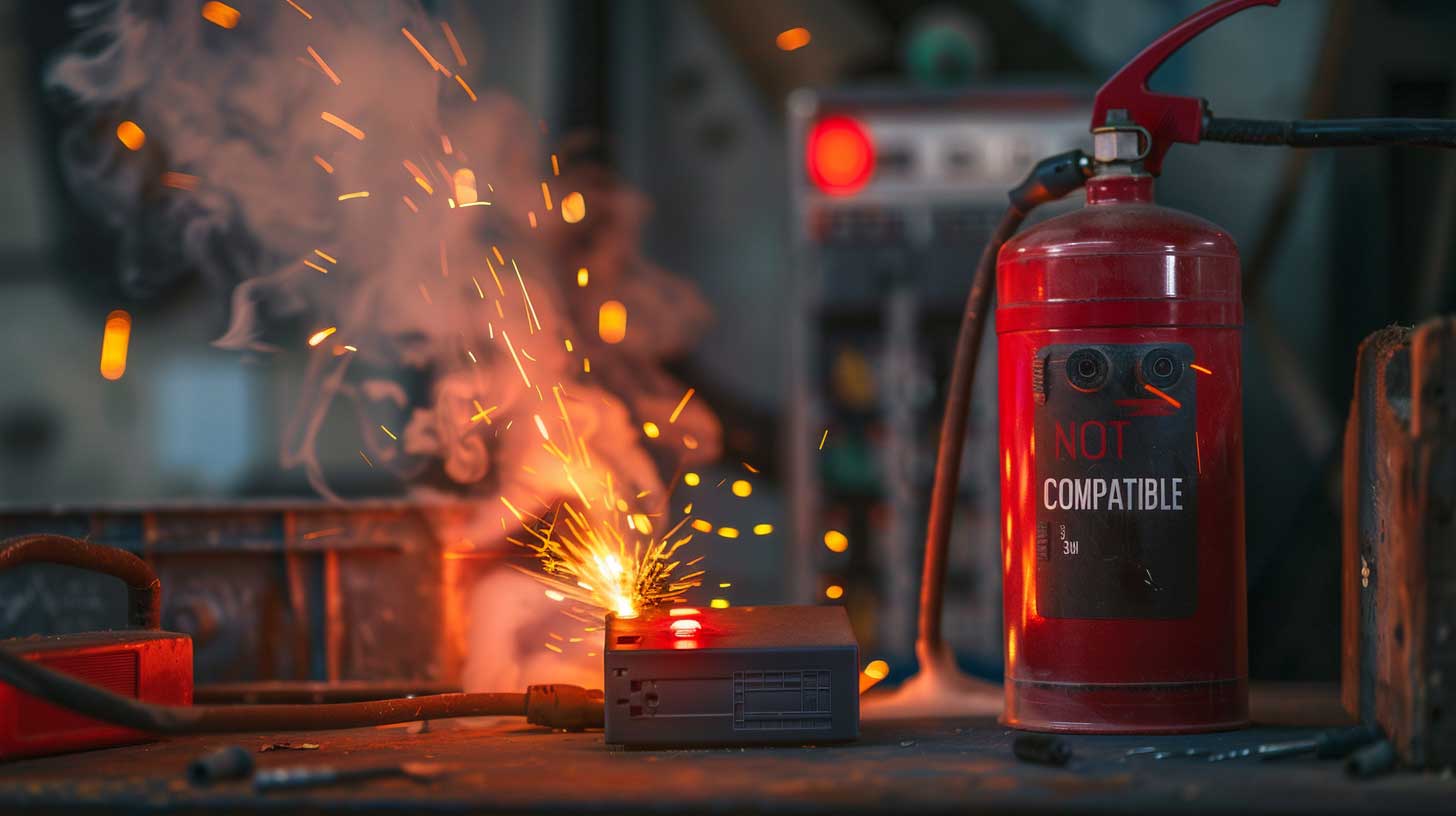
The fear of battery fires keeps many people from adopting lithium technology. But does this concern apply to LiFePO4 batteries?
LiFePO4 batteries are among the safest lithium battery options with an extremely low fire risk. Their phosphate-based chemistry resists thermal runaway, doesn't release oxygen when damaged, and remains stable at high temperatures up to 270°C (518°F). Combined with proper battery management systems, they're significantly safer than other lithium-ion types.

Let's examine why LiFePO4 batteries are considered safe and how they compare to other energy storage options.
What makes LiFePO4 different from the lithium batteries we see catching fire in the news?
LiFePO4 batteries use iron phosphate chemistry (FePO4) rather than the more volatile cobalt oxide found in other lithium batteries. This creates stronger molecular bonds that resist breakdown under stress, making thermal runaway and fires exceptionally rare occurrences.

| Safety Feature | How It Works | Benefit |
|---|---|---|
| Stable Chemistry | Strong phosphate-oxygen bonds | Resists thermal breakdown |
| High Ignition Temp | 270°C (518°F) vs 150°C (302°F) for NMC | Won't catch fire easily |
| No Oxygen Release | Doesn't decompose into oxygen | Removes fire fuel source |
| Slow Heat Spread | Exothermic reactions progress slowly | Allows time for intervention |
| Built-in BMS | Monitors voltage, temperature, current | Prevents unsafe conditions |
No explosive venting under overcharge
Non-flammable electrolyte (compared to standard lithium-ion)
Maintains integrity during penetration tests
Passes safety certifications like UL1973, UN38.3.
Why choose LiFePO4 over more energy-dense lithium options?
While NMC and LCO lithium batteries offer 20-30% higher energy density, LiFePO4 provides 4-5x better thermal stability, 2-3x more charge cycles, and eliminates cobalt - making it the safest choice for home and commercial energy storage applications.

| Type | Fire Risk | Thermal Runaway Temp | Oxygen Release | Recommended Use |
|---|---|---|---|---|
| LiFePO4 | Very Low | 270°C (518°F) | No | Home/Solar Storage |
| NMC | Moderate | 150-200°C (302-392°F) | Yes | EVs/Portable Devices |
| LCO | High | 150-180°C (302-356°F) | Yes | Consumer Electronics |
| Lead Acid | Low | N/A | Yes (Hydrogen) | Automotive Starting |
Cobalt-Free: Eliminates ethical sourcing concerns
Cycle Life: 2000-5000 cycles vs 500-1000 for NMC
Voltage Stability: Steady discharge curve prevents sudden power drops
Eco-Friendly: Non-toxic materials simplify disposal
Can anything make a LiFePO4 battery catch fire?
While theoretically possible under severe abuse, LiFePO4 batteries resist all major fire triggers: they don't combust from overcharging (BMS protected), resist short circuits, handle over-discharge safely, and contain no flammable liquid electrolyte that could leak and ignite.

| Risk Factor | Standard Lithium Risk | LiFePO4 Solution | Anern Enhancements |
|---|---|---|---|
| Overcharge | High - Can ignite | BMS cuts off at 3.65V/cell | Dual redundant protection |
| Short Circuit | Sparks/flames | Built-in current limiting | Ceramic separators added |
| Physical Damage | Possible thermal runaway | Stable chemistry resists | Rugged steel casing |
| High Temp Exposure | Accelerated breakdown | Works to 60°C (140°F) | Active cooling options |
| Aging | Increased instability | Maintains chemistry | Smart capacity monitoring |
Multi-layer separators prevent internal shorts
Flame-retardant casing contains any incidents
Temperature sensors on every cell
Isolated cell design prevents cascading failures
How can users maximize LiFePO4 safety in real-world installations?
While LiFePO4 batteries are inherently safe, proper installation and maintenance further reduce risks: use manufacturer-recommended chargers, maintain clean dry environments, allow ventilation space, regularly inspect connections, and never modify battery cases or BMS components.

| Installation Factor | Recommendation | Why It Matters |
|---|---|---|
| Location | Dry, ventilated area | Prevents corrosion and overheating |
| Mounting | Secure, vibration-free | Protects internal components |
| Wiring | Proper gauge, clean connections | Avoids resistance heating |
| Charging | Use matched LiFePO4 charger | Prevents voltage spikes |
| Storage | 30-50% charge for long term | Minimizes chemical activity |
| Monitoring | Check monthly | Early issue detection |
Detailed installation guides
Warning labels in multiple languages
QR codes linking to safety videos
Customer support for safety questions
LiFePO4 batteries represent the safest lithium chemistry available today, especially when paired with robust battery management systems like those in Anern's energy storage solutions.